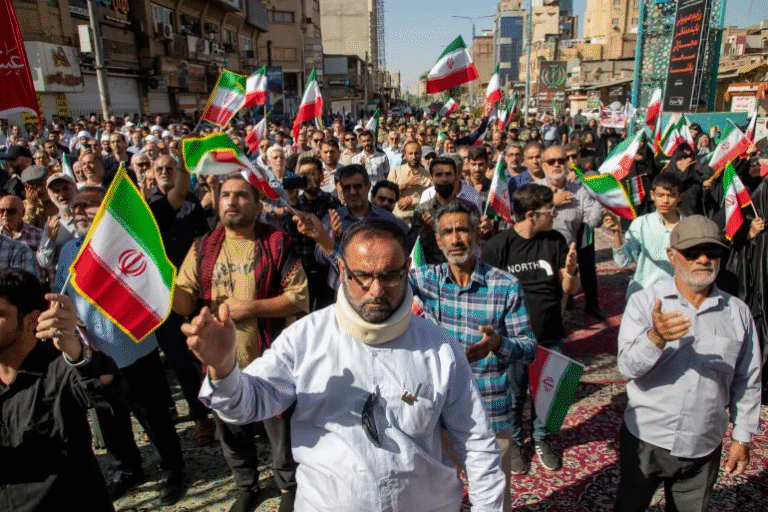
The world is undeniably heating up, and nowhere is this more evident than in the global heat waves tormenting us with unprecedented and extended periods of oppressive temperatures. The World Meteorological Organisation defines a heatwave as several consecutive days of unusually high temperatures, often 5°C or more above the seasonal norm. Beyond the constant rise in mercury levels on the thermometer, the visible suffering of the natural landscape, and the various health impacts on humans and animals alike, lies an often-overlooked but equally important consequence of this rising heat —the slow and painful drain on a nation’s economy.

Imagine a tax levied not by the government, but by nature itself, a force gradually eating away at a nation’s economic prosperity. This is the silent but devastating effect of heat waves on a nation’s wealth. A country cannot truly prosper if its workforce is rendered ineffective under the stifling heat, its agriculture scorched, and its energy systems pushed to breaking point. In this article, we’ll dive into how rising temperatures are doing more than making us sweat- they’re draining global GDP and redefining how economies withstand climate shocks.
Agriculture: Withering Crops and Shrinking Output
Agriculture is greatly impacted by heatwaves, including reduced crop yields because of soil erosion, water scarcity, and the inability of heat-sensitive crops to tolerate high temperatures. Livestock is equally affected, leading to the production of less milk and meat, higher rates of disease, and lower fertility. Food costs rise and rural incomes decline as agricultural output declines, which fuels inflation. Recent examples of heat waves across India and other European regions have shown significant crop losses.
A 2024 ICAR report found that the March–April heatwave affected crops in nine Indian states, causing significant losses in rice, wheat, and vegetables. These agricultural shocks have a direct and immediate impact on GDP, especially in developing countries where farming remains a major part of the economy. This highlights the growing threat to food security from the rising temperatures. These losses incurred in agriculture have an immediate impact on GDP and impede overall growth in many developing nations where agriculture plays a significant role in the economy.

Labour Productivity: Too Hot to Work
Extreme heat has a direct impact on labour productivity, especially for people working outdoors in sectors like construction, agriculture, and delivery services. Prolonged exposure to high temperatures can have various health issues like fatigue, heat exhaustion. This renders workers unproductive as it becomes difficult for them to perform their duties effectively. Indoor work suffers in equal measure- Lack of proper cooling systems in many workplaces and unsustainable infrastructure often leads to a slower pace, frequent breaks, and reduced efficiency. As a result, valuable working hours and oftentimes human capital are lost, which directly affects economic output.
According to the International Labour Organization (ILO), by 2030, heat stress is expected to cause a loss of over 2% of total working hours globally, equivalent to approximately 80 million full-time jobs, with agriculture and construction workers in developing nations most at risk. In developing nations, where a sizable section of the labour force works in unorganised sectors without proper protection, access to healthcare, or climate-adaptive working conditions, the effects are especially severe.

Energy Demand and Infrastructure Strain
Extreme heat leads to a sharp rise in the demand for electricity as the need for air conditioners, fans, and cooling systems increases significantly, which becomes crucial to cope with the soaring temperatures. There is immense pressure on power grids due to the sudden and sharp rise in electricity consumption, which can often result in outages or system failures.
In addition to this, transport and logistics also suffer due to infrastructure damages such as rail tracks warping and roads softening or cracking under the intense heat. It causes delays in the movement of goods and people, increased repair costs, and breakdown of key transportation and delivery networks. Along with the delay in the movement of goods and people, it also leads to significant financial losses for governments through increased repair costs, reduced trade efficiency, and lower economic output from affected regions.
Governments have to provide energy subsidies to households to alleviate the cost of increased electricity consumption, which puts further financial strain on the public coffers. While necessary, these emergency expenditures on energy and infrastructure repairs inhibit long-term economic growth, as over time, the cost that would have been spent on critical sectors such as education and public healthcare is diverted towards managing such heat-related issues.
Health Costs and Public Spending
Common heat-related health issues among people include heatstroke, dehydration, and respiratory problems. This leads to a rise in the number of hospitalizations and also increases the burden on public health systems. For instance, during the 2024 heatwave, India recorded at least 143 deaths and over 41,000 suspected heatstroke cases between March 1 and June 20. Families commonly bear personal expenses for therapies, prescription drugs, and emergency care, which can prove to be expensive, especially for low-income people.

As death rates rise, a large amount of valuable human capital is lost, with the elderly, small children, and individuals with pre-existing health conditions being particularly vulnerable. To solve the crisis, governments may need to expand insurance coverage, create heat health awareness campaigns, and reserve emergency funds.
For example, in response to approximately 2800 heat-related fatalities seen in the state of Andhra Pradesh between the years 2014-2017, the Andhra Pradesh State Disaster Management Authority (APSDMA) brought forward its Heat Action Plan. The plan, which included early warning systems, public awareness drives, and hospital preparedness, saw a dramatic drop in fatalities, from thousands in earlier years to nearly zero in recent summers. While its accomplishment clearly shows the potential of coordinated action, it also serves as a reminder that such projects require long-term finance, local commitment, and continual public participation to be effective in the face of rising temperatures.
In addition, frequent sick days and long-term health difficulties lower total workforce productivity. This is demonstrated by the 2022 heatwave in Europe, which not only caused more than 60,000 fatalities but also led to labour disruptions, reduced working hours, and a fall in economic output in sectors like agriculture, industry, and construction.

Unequal Impacts: Developing Nations Hit Harder
The financial and technological means required to adapt to high heat are frequently lacking in poorer countries. There is either little or no basic infrastructure, such as dependable cooling systems, effective water management, and early warning systems. As a result, these communities are left more vulnerable to the effects of heat waves.
The informal sector (comprising a sizable part of the workforce in most developing countries) is particularly at risk as they have limited access to healthcare, insurance, and government relief during climate-related emergencies. This accelerates the existing disparities and widens the global climate resilience gap. According to recent studies, global heatwaves have led to economic losses of around $16 trillion between 1992 and 2013, with low-income countries facing the heaviest burden.
Paradoxically, tropical nations, which emit the fewest greenhouse gases globally, are expected to experience the most severe economic impacts. For example, compared to more temperate countries, regions such as South Asia are predicted to suffer far greater GDP losses due to rising temperatures, which would further impede their progress toward development.
Conclusion
The economic consequences of heatwaves encompass a lot more than discomfort- they disrupt agriculture, lessen productivity of labor, strain infrastructure, and burden public health systems. Estimates suggest that if global temperatures continue to rise, GDP losses from heat waves will intensify significantly by 2100, especially in warmer regions. This will postpone infrastructure construction and put a pause on economic growth, and poverty reduction, as money from the public coffers shifts from development to disaster relief and healthcare.
Thus, investing in climate-resilient infrastructure, implementing heat action plans, strengthening labour protections, and encouraging international collaboration are no longer optional- they are essential. In an era of escalating climate change, building heat-resilient economies is not merely a response but a critical necessity for sustainable development.
Written by – Devangee Kedia
Edited by – Khushboo Dandona
The post Scorched Economies: The Growing Impact of Heatwaves on GDP appeared first on The Economic Transcript.


